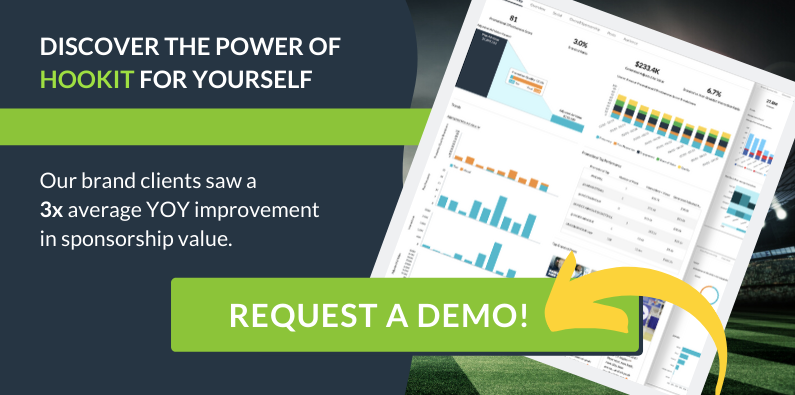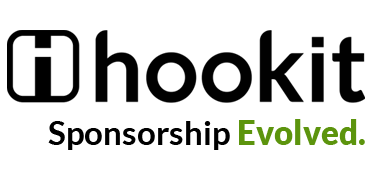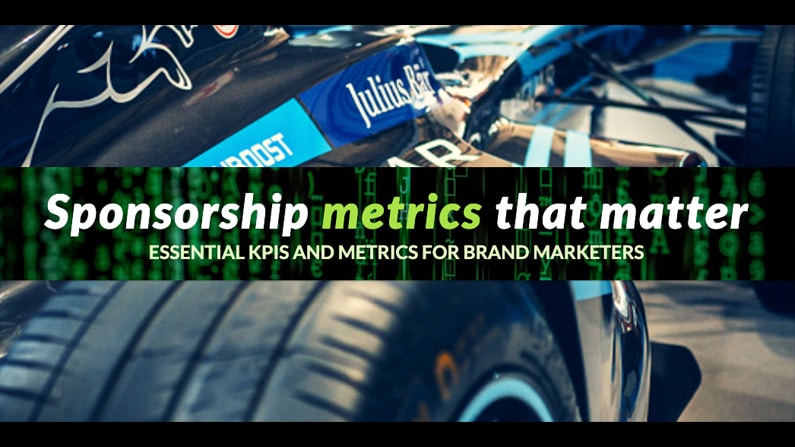Essential KPIs and metrics for brand marketers evaluating their sponsorship portfolio
How valuable is your sponsorship spend? Now that you’ve identified the best properties to sponsor and you’ve got your sponsorship deals in place, what’s next? Our previous article covered the performance-based sponsorship model that major sponsors like AB InBev have started to implement with their sponsored properties. One of the key components of performance-based sponsorships is the ability to identify and measure the sponsorship metrics that matter to ensure that the sponsored properties meet the objectives of the sponsor, leading to true alignment that is essential for success.
Setting Brand Goals / Benefits Of Sponsorship
Brands sponsor for a multitude of reasons, primarily to build brand awareness, attract new customers, and drive excitement and sales about products and services. Different brands have different objectives, meaning that it is key to know and communicate your goals to your sponsorship partners. Whatever the end goal of a brand sponsorship may be, the brand needs to identify the necessary metrics and measure their impact in relation to its goals to discern the best sponsorship investment.
Identifying The Right Metrics
There are various metrics available to measure the effectiveness of a brand’s sponsorship. However, most of these popular metrics may be vanity metrics – they are flashy metrics which look good, but have little to no impact for a brand’s goals. (For example, the number of posts or social media impressions may seem like a great metric with a huge number, but does not always translate and contribute to a tangible value to the overall goals of the company).
As a brand marketer, it is important to identify primary metrics that further your organization’s goals, then monitor and measure them accurately.
As a brand marketer, it is important to identify primary metrics that further your organization’s goals, then monitor and measure them accurately. This helps ensure that sponsored properties are meeting their set objectives and will also help identify potential new properties who are performing well on the chosen metrics. Engagement, promotion quality, and sponsorship value are some examples of good primary metrics for an organization.
Secondary metrics may vary depending on the sport or the property, but the primary metrics for a brand sponsor should be constant. Tying your primary metric to the primary business objectives is key – be it brand awareness or increased sales.
Getting To Sponsorship ROI
One primary goal for a brand sponsor should be maximizing sponsorship ROI. To calculate sponsorship ROI, brand marketers must have a reliable tool in place to capture all the promotion coming from sponsored properties related to their brand and have the ability to place a value on that promotion. Comparing value received from partners to the sponsorship investment cost allows the brand marketer to compare the budget spent and ROI on sponsorships to other marketing budget items like digital advertising or PR.
While there are many ways to do this, the Hookit Valuation Model (HVM) provides the most reliable value for a sponsorship investment because it allows sponsorship spend to be directly compared to other items in the marketer’s budget. Read more on how the Hookit Valuation Model works further down this article.
The Importance of Independently Verified Metrics
At the early stages of sponsorship evaluation, brand marketers typically rely on property-provided metrics because they are free and easy. However, according to the Marketing Accountability Standards Board (MASB), these metrics typically “lack transparency and have bias.” A third-party platform such as Hookit can provide unbiased measurement for a brand sponsor. Hookit actively tracks over 500,000 entities in sports across multiple platforms and data sources. This provides a sponsor brand with a holistic picture as well as the fine detail and data it needs to understand the impact of its sponsorship portfolio across all its sponsored properties as well as its competitors.
Calculating Value From Social Media – the Hookit Valuation Model
Here is a breakdown on how the Hookit Valuation Model works.

Maximum Ad Value (MAV) – The first step to coming as close as possible to the actual ad value is by first determining the Maximum Ad Value (MAV). In short, this is the maximum cost for an ad on the platform based on the level of engagement in the post being measured (assuming 100% creative control by the brand). To calculate MAV, we take each engagement a post receives and multiply it by the appropriate cost per engagement value (CPE). CPEs are specific to engagement type (like, comment, share, view) and platform. They are updated daily and derived by averaging auction costs, actual campaign costs, and 3rd party supplied costs.
Promotion Quality -In order to understand how much of this of this MAV is being captured by your brand, we must then look at the Promotion Quality Score. This is a measure between 0-100% and reflects how well the post did on promoting a brand. The promotion quality is measured based on two factors of text quality and logo quality. In order to obtain a perfect promotion quality score, a post must include both text and visual components for the brand. However, it is still possible to get a reasonably high promotion quality score with text or visual components alone. Here is more of a breakdown on how Hookit looks at these factors to determine promotion quality.
- Text Quality – When we consider the promotional quality of a social media post, text features like hashtags and mentions are clearly important to the value of the post itself, as each provide actions for the audience to take that drive brand engagement (clicking directly on a mentioned brand or using a campaign hashtag in other user-created posts.). In addition, use of particular keywords, like a brand’s name or slogan, also create value for the brand. Our text quality score is a function of the position in the caption, how crowded the caption is with other text features, and the type of text features used. The more prominent these features are in a post, the higher the text quality score they achieve. For instance, if a brand’s hashtag is lost in a sea of 20 other hashtags, it is much less visible than if it were one of only a few hashtags on the post and will receive a relatively low text quality score.
- Logo Quality – We determine logo quality based on a number of factors that affect whether a logo is likely to be seen in an image or a video. First, we look at both the coverage and clarity of the logo. If the logo is large, but extremely blurry and it’s hard to determine what it is, it is of little value to a brand. In addition to coverage and clarity, we also take into account the presence of other brand logos within the same image or video frame (competition). The more an image is cluttered with other logos, the harder it is to pay attention to any single logo, it has to compete for our attention. Finally, for videos, we consider how many viewers are still watching when a logo appears (viewership). If a large, crisp logo appears on the screen for 5 seconds, but there is no one there to watch it, how valuable is it? For most videos on social media, peak viewership is within the first few seconds and declines sharply after that. The higher the viewership when the logo is present, the higher the score it will receive. These four components are then combined into a single logo quality score.
Adjusted Ad Value (AAV) – Once we have the MAV of a post, as well as its promotion quality, we simply multiply the two to arrive at the Adjusted Ad Value (AAV) of the post. The AAV is the value of the post to the brand measured, based on the level of engagement it received, as well as the quality of the promotion in the post.
The Impact of Metrics
In today’s world of data-driven marketing, proving the impact of sponsorship with comparable metrics is key to keeping and increasing the budget allocated to this area of the brand’s portfolio which commands an average of 17% of total spend for some top brands . Metrics help brands ensure that these dollars are being used properly and the sponsored properties (teams, leagues, etc) are meeting and achieving their set goals. They also help monitor and keep track of the value of sponsorship investments. Finally, when researching potential new sponsorship opportunities, metrics can identify properties that are likely to drive the most value for the brand and filter out those that are underperforming.
At Hookit, we are now witnessing an aggressive movement by brands to quantify and measure the true impact of their sponsorship, by leveraging tools in house to track and value their portfolio in a holistic way. This is unsurprising, as brands are now focusing more on ensuring alignment with their goals and true ROI measurement of their sponsors going forward. Learn more about how Hookit is helping brands measure their sponsorship ROI!



